Editor's note: In a series of reports titled "Legacies of the Games", China Daily explores changes brought to the country by the Beijing 2022 Winter Olympics. This is the third part of the series.
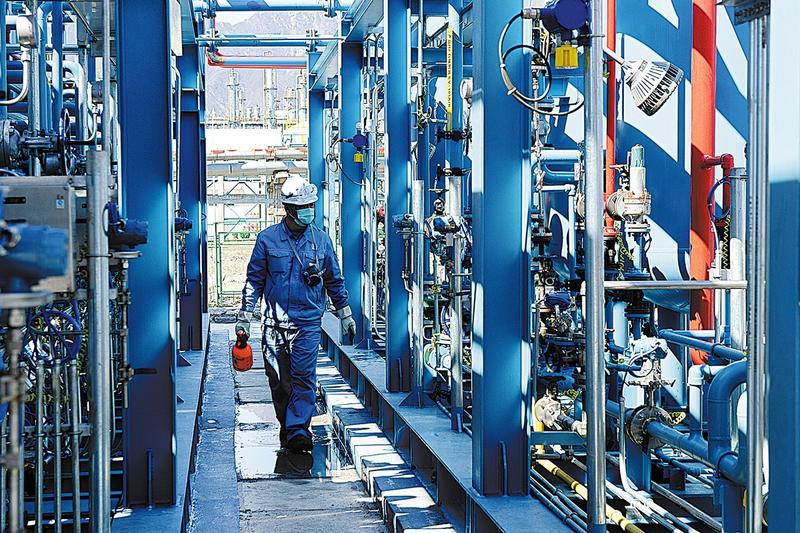 A worker checks the hydrogen purification plant at Sinopec Yanshan Petrochemical Co, a subsidiary of China Petroleum and Chemical Corp and a main supplier of the gas for the Winter Olympics in Beijing. (PHOTO PROVIDED TO CHINA DAILY)
A worker checks the hydrogen purification plant at Sinopec Yanshan Petrochemical Co, a subsidiary of China Petroleum and Chemical Corp and a main supplier of the gas for the Winter Olympics in Beijing. (PHOTO PROVIDED TO CHINA DAILY)
As the global climate crisis looms larger, the 2022 Winter Olympics and Paralympics in Beijing have set a template for the organization of green events globally.
A series of advanced low-carbon technologies used during the Winter Olympics, the first carbon-neutral Games, resulted in a legacy with far-reaching significance for the climate change process in China and farther afield.
A grid fully powered by renewable energy that met demand at all Winter Olympic venues will also potentially accelerate low-carbon transition in the Greater Beijing area. The grid, the result of regional cooperation, can be instructive for other regions as they seek a green future.
The Winter Olympics were the first Games at which all venues were supported by renewable energy. This was made possible by a flexible direct current power grid connecting Beijing with a renewable energy demonstration zone in the co-host city of Zhangjiakou, Hebei province, which boasts rich wind and solar resources.
In 2015, when the capital won the bid to host the Winter Olympics, the National Development and Reform Commission, the nation's top economic planner, approved a plan to establish the zone, pledging to generate 95 billion kilowatt hours of renewable power by 2030 for the Beijing-Tianjin-Hebei cluster.
Construction started in early 2018, with the grid put into operation on July 6, 2020.
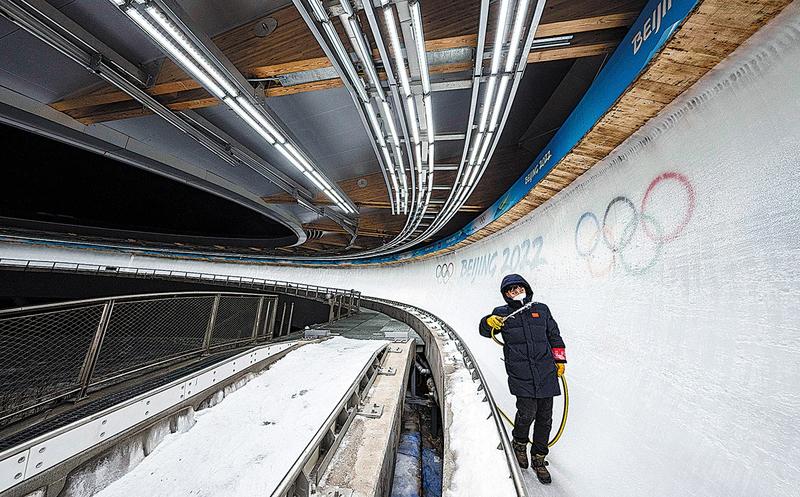 The track is checked at the National Sliding Center in Beijing. (JIANG WENYAO / XINHUA)
The track is checked at the National Sliding Center in Beijing. (JIANG WENYAO / XINHUA)
The Winter Olympics' Pre-Games Sustainability Report, which was unveiled in January, stated, "Preparations for the Games have accelerated implementation of the project, which is a flexible DC (direct current) project with the largest transmission capacity in the world."
Despite increasingly lower costs for generating renewable energy, especially solar power, the intermittent nature of such energy has long been a factor hampering application on a large scale.
However, with help from a hydropower station for pumped storage, which is the world's largest, the grid can transmit abundant clean and renewable energy to Beijing safely and efficiently, according to the report.
Pumped storage is one of the most cost-efficient ways to store renewable energy. When there is a surplus of power in the grid, water is pumped uphill. In case of rising demand, the water is released to regenerate electricity.
The Zhangjiakou-Beijing grid is estimated to transmit about 14.1 billion kWh of clean energy to the Chinese capital a year, equivalent to about 10 percent of the city's annual electricity consumption, the report added.
Ma Jun, director of the Institute of Public and Environmental Affairs, an NGO, said: "It is a very large scale. This is the largest green legacy the Games will leave for Beijing."
He said the grid marks a very good beginning. Instead of importing electricity and exporting emissions, Beijing, with its capability and resources, has started to support other regions in addressing their emissions. Such action can be instructive for these areas in promoting climate action via regional cooperation.
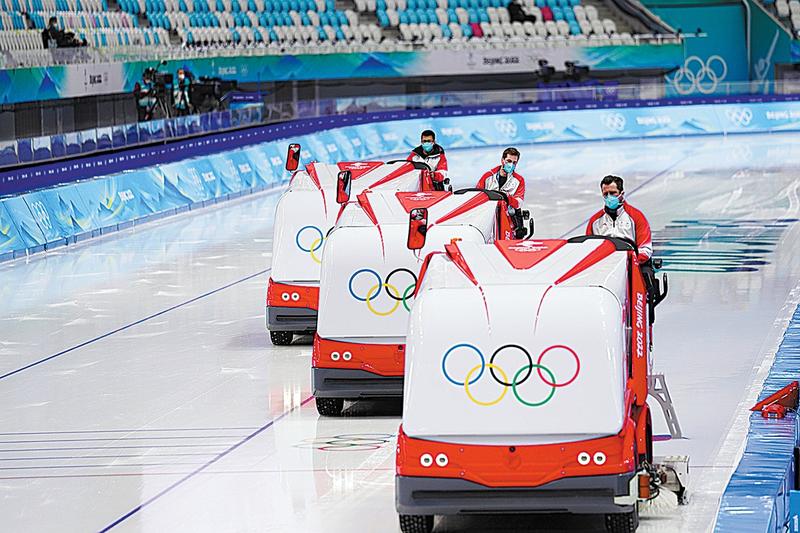 Ice makers operate at the National Speed Skating Oval in Beijing on Feb 8. (WANG WEIWEI / FOR CHINA DAILY)
Ice makers operate at the National Speed Skating Oval in Beijing on Feb 8. (WANG WEIWEI / FOR CHINA DAILY)
Measures taken
In addition to meeting power demand at all venues with renewable energy, Games organizers took a series of other measures to reduce carbon emissions, including fueling the Olympic torch and powering buses with hydrogen, which has zero emissions. They also reused venues built for the 2008 Beijing Summer Olympics.
According to the Beijing Organising Committee for the 2022 Olympic and Paralympic Winter Games, total greenhouse gas emissions from the two events from 2016 to next year will be equivalent to about 1 million metric tons of carbon dioxide-some 0.6 million tons less than those for the Winter Olympics in Pyeongchang, South Korea, four years ago.
Organizers of the Beijing Games vowed to offset all carbon emissions with carbon credits, some of them from forestry projects.
A recent analysis from S& P Global Platts, a provider of information, benchmark prices and analytics for the energy and commodities markets in London, said, "While this is not the first sporting event or Olympics to reduce its carbon footprint, it sets the template for how future global events will be conceptualized-focusing first on reducing emissions instead of relying on offsets, which industry experts admit are a last resort."
At the opening ceremony for the Winter Olympics on Feb 4, a snowflake suspended in the air after a torch was placed inside it replaced a traditional Olympic cauldron. Instead of roaring fire, the tiny flame in this cauldron was said to be the smallest in Olympic history.
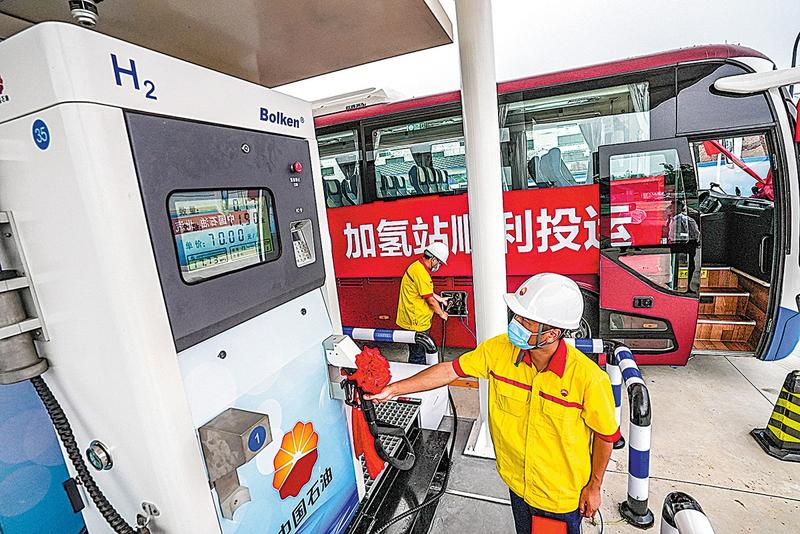 Workers supply hydrogen for vehicles used at the Winter Olympics in Beijing. (WU YIBIN / FOR CHINA DAILY)
Workers supply hydrogen for vehicles used at the Winter Olympics in Beijing. (WU YIBIN / FOR CHINA DAILY)
Other torches used on the Chinese mainland for the Winter Olympics were also fueled by hydrogen, the first time zero-emission torches had been used for the Winter Games.
Not only did the torches avoid consuming thousands of cubic meters of fossil fuel gas per hour, as those used in previous Games did, the technologies used for them may help better promote the safe use of highly reactive and flammable hydrogen.
For decades, hydrogen has been stored in high-pressure tanks, but using it to fuel Olympic torches in such a confined space is a lot more challenging.
Researchers for the Olympic torch project from the 101st Institute of the Sixth Academy of China Aerospace Science and Industry Corp said there are challenges not only in designing the tanks for the torches, but also in making a valve to reduce pressure from the hydrogen released to control the shape of the flame.
It took the team more than a year to design a successful valve system. Li Xiaofeng, director of the torch project, said his team reduced the weight of the pressure control valve to only 290 grams. This valve combines with two others to help the burner and storage systems.
Li said: "In the future, if we want to popularize the use of hydrogen, then cheap and safe pressure release valves must follow. Over the years, we have made great achievements in producing valve products independently."
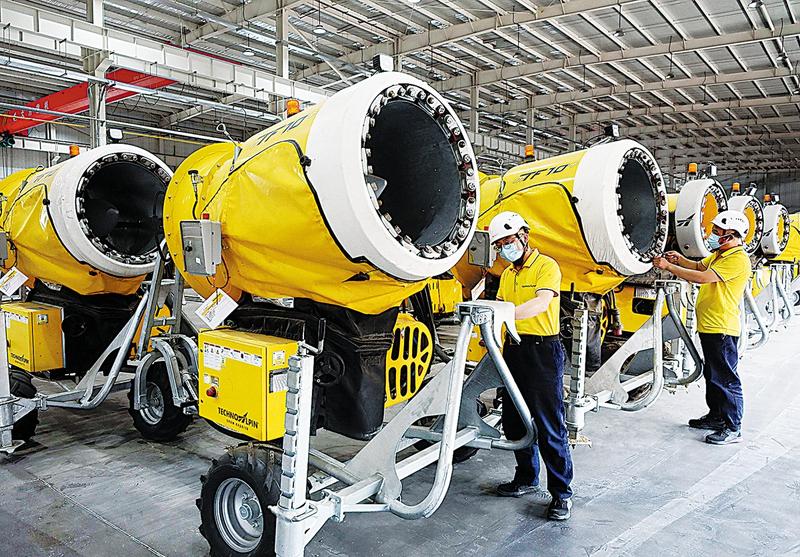 Snowmaking machines are checked at a factory in Zhangjiakou, Hebei province. (YANG SHIYAO / XINHUA)
Snowmaking machines are checked at a factory in Zhangjiakou, Hebei province. (YANG SHIYAO / XINHUA)
Difficulties addressed
Technological breakthroughs were also made in improving the performance of hydrogen-powered vehicles for the Winter Olympics.
Long Fenjie, head of the Hebei Provincial Department of Science and Technology, said at a news conference organized by the Beijing 2022 Media Center on Feb 16, "We had to address difficulties in the fast startup of hydrogen-powered vehicles in low temperatures and ensure that the hydrogen buses in Zhangjiakou could successfully fulfill their tasks of providing transportation for the Games."
Recognizing the importance of hydrogen in China's green, low-carbon transformation, the Outline of the 14th Five-Year Plan (2021-25) for National Economic and Social Development and the Long-Range Objectives Through the Year 2035 lists the gas as one of the forward-looking industries.
Low-carbon technologies used for the Beijing Games also included making ice from carbon dioxide, along with fire- and weather-resistant steel.
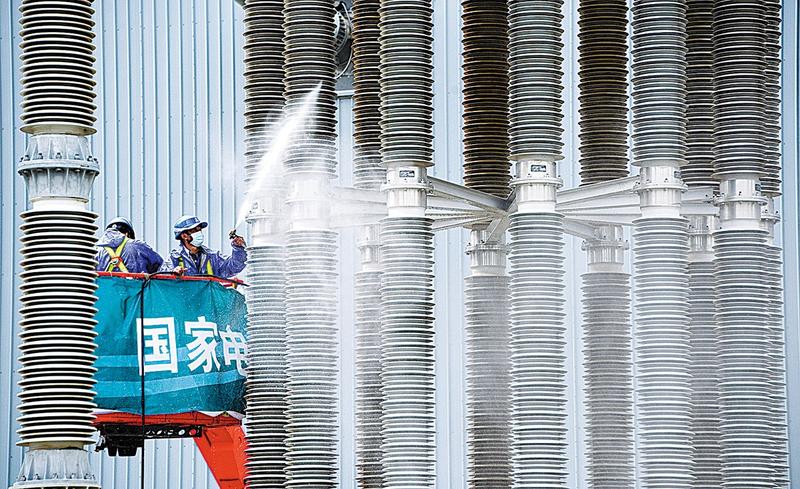 Workers clean insulators in Yanqing district, Beijing, supplying power for the Games. (LI XIN / XINHUA)
Workers clean insulators in Yanqing district, Beijing, supplying power for the Games. (LI XIN / XINHUA)
Carbon dioxide was used for the first time as a refrigerant to make ice for the skating tracks at the Winter Olympics. The technology was applied at four venues, including the National Speed Skating Oval.
Compared with traditional methods, making ice from carbon dioxide can save electricity use by more than 20 percent, according to the Oval.
The 60-meter-high Shougang Big Air in the Shijingshan district of Beijing, the world's first permanent venue for Big Air events, is built from high-quality steel with a strong resistance to corrosion. This steel can withstand extreme weather conditions, which are becoming more frequent due to global warming.
The venue's main structure can withstand an 8.0-magnitude earthquake. The steel track is strong enough to resist serious corrosion caused by frequent use of snow-melting agents.
Li Ming, deputy general manager of Beijing Shougang Co, said the company used seven types of high-performance steel at the venue to meet the requirements for permanent use, and also to make the venue safe and easy to maintain.
At a news conference on Friday, Wang Jinnan, head of the Chinese Academy of Environmental Planning, said the green, low-carbon practices for the Beijing Winter Olympics set excellent examples for advancing construction of a Beautiful China.
Quoting a recent article from the journal Nature, Wang, also an academician at the Chinese Academy of Engineering, said that despite carbon reduction at the Games being like a drop in the ocean compared with the nation's total emissions, it proves that it is possible to realize carbon neutrality on an even bigger scale.
"This will leave a rich, precious, sustainable Olympic legacy for future generations," he added.


